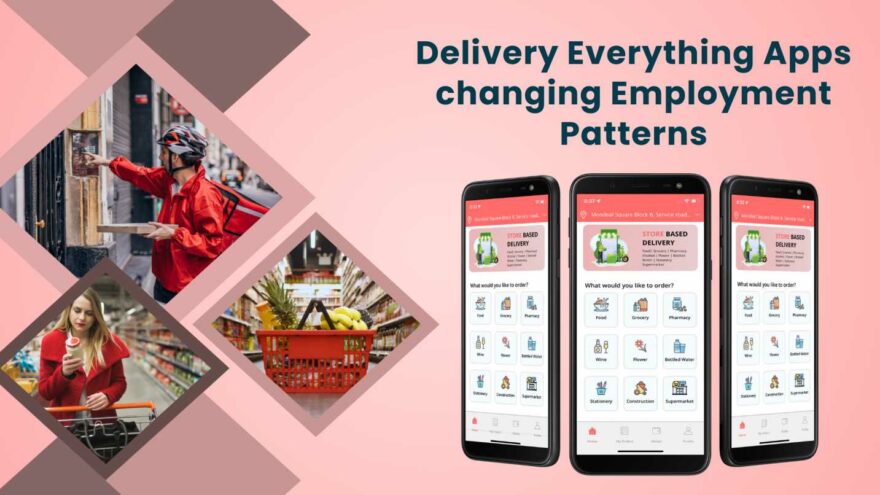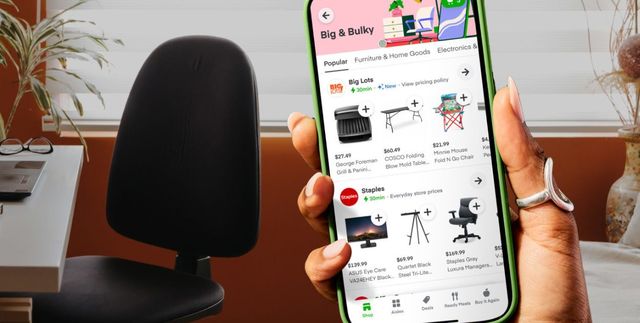One of the many impacts of Delivery Everything Apps has been seen in the rise of delivery drivers and the subsequent gig economy. Such apps have provided opportunities, income, family stability, and personal development. In this blog, you will understand the role of delivery apps as the core activity of global commerce and material well-being.
Today, on-demand has been the one industry that acts as a mediator for many successful businesses to find new customers and retain old ones. You can sense whether a delivery app is popular by seeing the number of delivery people outside a high-end restaurant. This is not a standalone example but a worldwide phenomenon. Because of unprecedented social and technological changes, people’s aspirations have taken a different turn, eventually affecting their working lives.
The Increasing Popularity of Delivery Everything Apps
Food delivery customers are expected to reach 2.5 billion by 2028, a staggering 25% of the global population by then. With a market penetration of 30%, things are not looking to slow down anytime soon. The key to this level of reliability comes from the convenience most delivery apps offer nowadays.
These apps are a great backup for those who don’t want to leave their house. Moreover, delivery apps have been developed using smart, user-friendly interfaces, urging the customer to spend most of their time interacting with the app.
A Significant Growth in Economic Squeeze
More than 20 billion parcels are shipped every year in the United States. The rise in smartphone usage has been a major driver in making this number a reality, with delivery drivers being the underrated focal points driving workplace and labor market changes on a global scale. However, there is still a long way to go, as last-mile deliveries remain challenging, particularly with increasing expectations for speed (10 minutes or less).
Furthermore, commissions and delivery fees drive the current economics between restaurants and customers. Given the economic squeeze, most delivery platforms are still only scratching the surface regarding consumer demand. For instance, with the help of the app, delivery drivers batch multiple orders as per the list of drop-offs with an in-built navigation feature to prevent a bad user experience.
Satisfying the demands of a customer is a never-ending loop, but it is getting better with each new feature being introduced by modern delivery of everything apps. If unlocked at the right time, these apps are poised to grow their overall volume and generate profits at scale in this vast pool of potential demand.
By delivering higher-margin products in new categories such as pharmaceuticals, groceries, and more, many platforms are expanding the use cases for their logistics networks. As a result, attracting new customer segments and increasing the average order value will maximize the efficiency of each delivery run.
The Relationship between Drivers and Customers
Time is one of the most expensive components for delivery drivers to complete a certain number of deliveries per hour. With the physical handoff to the customer, they can facilitate more total deliveries per hour.
Delivery drivers must complete several deliveries per hour to make the economy favorable. In fact, time is one of the most expensive components of single-point delivery, with the physical handoff to the customer typically taking one to five minutes. As food delivery takes off in less densely populated locations, including suburban and rural areas, the service becomes more costly for restaurants and drivers.
The customers fueling the surge in delivery are paying a significant premium as some restaurants raise their delivery menu prices while others opt for pricing consistency.
For instance, if a typical order is priced around $25 on a delivery platform’s menu, the customer might pay roughly $35, excluding tax, driver tips, and service fees. They generally pay a 40 percent premium, whereas restaurants receive around 55 percent of the total spend.
In the current delivery landscape, customers expect more from delivery services. They want everything—speed, quality, order accuracy, completeness, and variety.
New Opportunities and Untapped Revenue Pools
As people have accepted delivery services into their lives, new revenue pools are emerging from different concepts. Among the most promising revenue models are all related to using data to create a more personalized delivery app. However, few have taken one step further and created sub-concept delivery platforms to generate new jobs.
For instance, in the case of food deliveries, dark kitchens allow individuals to create restaurant-type places without a physical restaurant or storefront attached. They solely produce delivery orders by taking delivery out of the “front of house” and experimenting with minimal investment risks.
Furthermore, other revenue pools are associated with smart payment management systems. Simply put, they allow customers to track their payments, especially when dealing with large orders or recurring payments. This results in maintaining customer loyalty and promotes cross-selling by taking in feedback from multiple sources.
Increase Employment By Launching Your Own Delivery Business
Many business owners are creating new forms of employment that are not limited to deliveries but focus on creating value from the business end. They load their apps with features that compel users to spend more time choosing what they want from a wide range of options. By letting your customers order anything online from your platform without difficulty, your business will continue to gain trust and eventually profit.
However, to start launching a delivery business, it is quite clear that you need an app. In the case of running an on-demand service, a total of three different interfaces are necessary to compete with others. Later, you can create a website and subsequent panels, but first, the design and development of apps are paramount. Now, either you can hire developers to start the development process from scratch or invest in buying the entire package.
Modern entrepreneurs find the second option to be a more time-saving and cost-saving process, as the outcome of spending massive amounts of cash over several months will get you the same result as buying an app. Essentially, these clone apps offer similar features and services.
Another reason this option is very popular in the current landscape is that your entry into the market by saving time in development will be very early. You can get feedback from your customers and use it to your benefit. Meanwhile, your competition will develop an MVP with basic features that will stand nowhere near your delivery business.
Conclusion
With the fast-paced lifestyles people lead nowadays, time is of the essence. The way people request food, groceries, and medicines, among others, for doorstep deliveries is substantially changing. Around 20 years ago, third-party delivery services were mainly restricted to Italian or Chinese cuisine. The delivery market is worth more than a trillion dollars, having tripled since 2020. People have never been busier, and delivery services offer a convenient way to deliver a required product to their doorstep with minimal effort.


1 thought on “Role of Delivery Everything Apps In Changing Employment Patterns”